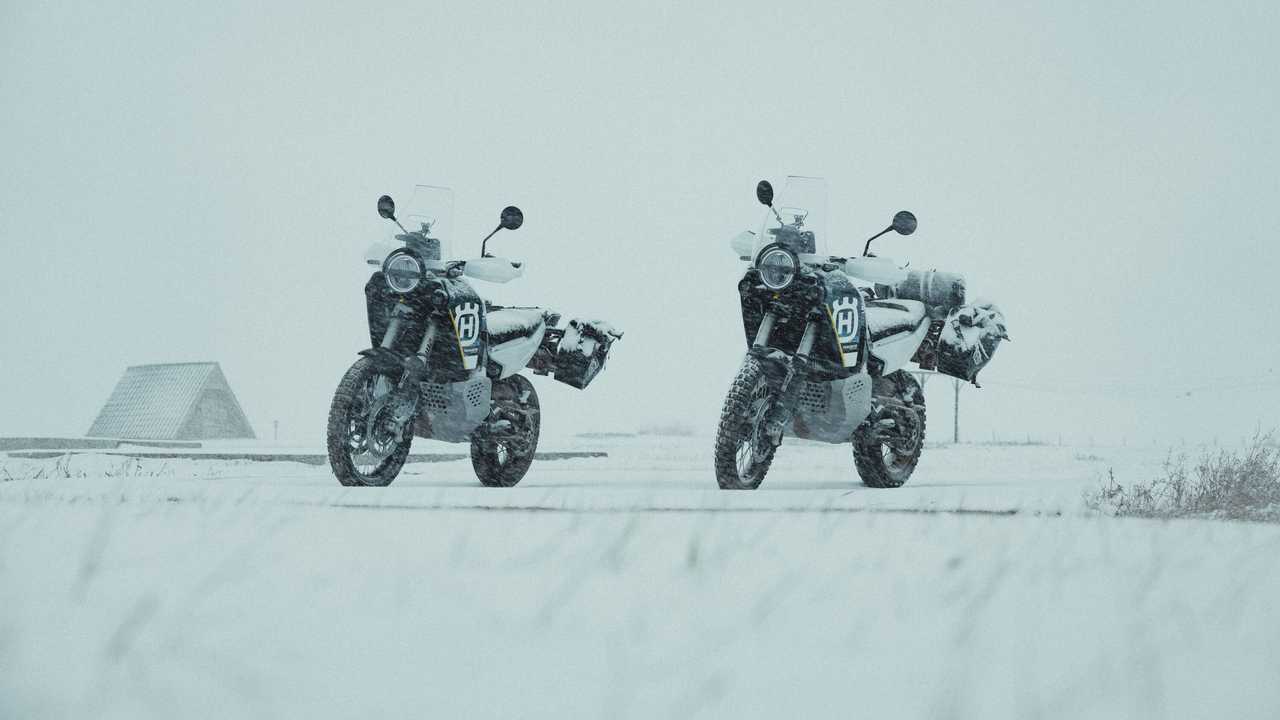If you're reading this, I'm guessing you live in a place that gets winter weather. If you don't, then perhaps you're trying to understand what it is that we riders who live in the colder climes go through once a year. There's bad news, and there's good news.
The bad news is, unless you're specifically planning to do a snowbike conversion or throw on some spiked tires and go ice riding, winter is when the vast majority of riders tend to cover their two-wheeled babies up and tuck them in for the next couple of months. It's a sad fact of living where we live, but it doesn't have to be all bad.
One way to look at it is that you're not really hanging it up for the winter. Instead, what you're doing is spring ride pre-prep for next year. Sure, you'll still need to do a few things before your first ride of the season. But it will be a lot easier if you take the proper precautions before storing your bike for the winter months.
Ready? Let's go!
Plug Your Battery In If You Can

There's nothing worse than getting geared up and excited to go for a ride, and then finding out your battery is dead. Except, of course, finding out that the battery is so dead, a jumper pack makes the gauge needles and time start flipping back and forth and flashing like your bike is haunted. (ASK ME HOW I KNOW.)
As a bonus, if your battery gets completely murdered by, say, a heated gear switch that accidentally got switched on without your knowledge, you might be in for an even bigger future headache (not to mention a severe pain in the wallet).
A dead battery you can jump is one thing, but a battery that's drained too far might end up completely unrecoverable, regardless of its age. You can save yourself a whole lot of hassle if you just make it a habit to plug your battery in to an appropriate charger any time you're not going to ride it for a while.
Make sure you have the appropriate charger for your battery type. A lithium battery requires a different type of charger, so check and make sure everything's compatible so you don't accidentally cause a different kind of unintended damage.
Fuel Stabilizer Is Your Friend

This only applies if you have a combustion motorbike of some sort, of course. If your two-wheeled ride of choice is electric, you can skip this section entirely.
Why use fuel stabilizer? Most of the time, winter storage will last longer than 30 days. According to small engine manufacturer Briggs & Stratton, 30 days are usually all that's needed for gasoline to start to break down.
Whether you like to wrench, or you just enjoy watching project bike videos on YouTube, you've probably seen what can happen when gas starts to gum up and/or turn to varnish. A clogged fuel system is no one's idea of a good time, so spending a few bucks on a bottle of fuel stabilizer and then using it as directed seems like a good trade-off for peace of mind.
Consider Doing Routine Maintenance Before You Tuck It In

How's your air filter? What about your oil? Is your brake fluid looking good? When's the last time you cleaned and lubricated your chain/inspected your drive belt? (Shaft-driven bike folks, feel free to laugh and/or smile here.)
When you want to ride, you want to ride. I know that's true, because honestly, same. It's when we get impatient that we put things off, even if they're things that we know we should do. And that's when things go wrong.
By contrast, when you're getting ready to put your bike away for the winter is probably the perfect time for any maintenance you've been putting off. If you already know that you're not going anywhere (for a little bit, at least), it frees you up to do all those little things you know deep down need doing.
If you're not the wrenching type, it gives you plenty of time to find either a handy friend or a shop nearby that can help. Better to put it away ready to ride as soon as the weather gets nice, right? Right.
Tuck It In And Give It A Hug

OK, you don't have to do this one unless you really want to, but it's probably a good idea if your bike is living outside. A good cover can help protect it from the elements in that situation.
If it's in the garage, a cover can help protect your bike from dust over the winter months. On the off chance that a family member bumps into it with a large keyring on their belt, a cover might also save your paint from getting scratched.
You can give your bike a hug any time, whether it's covered, uncovered, or not even winter. We won't judge.
If Your Bike Is Electric

Fuel stabilization clearly isn't an issue for you, but some routine maintenance still might be. If your bike is belt-driven, like this Zero SR/F, now is an excellent time to inspect the belt for any wear or damage that needs attention.
Checking the brake fluid and the condition of the brake pads is also a good idea, though you don't absolutely have to do it to prep for winter. As long as you make sure to check it on some kind of regular basis, you're good.
Check the manual for your bike to find out if it has some type of storage mode, so you know how it will behave when it's not ridden for the next two to three months. Follow any instructions the manufacturer lists regarding appropriate care and storage.
You can still tuck it in and give it a hug when you're ready. Electric bikes also like to know that you care.
Source: Briggs & Stratton

